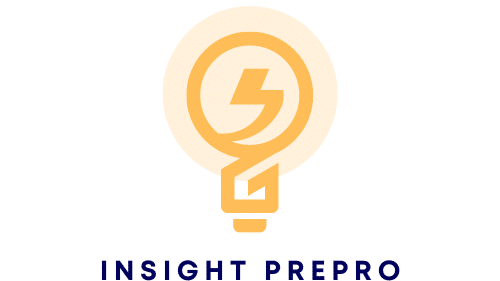The Power of Light in Buildings
In the ever-evolving world of real estate, one thing remains constant – the need for effective lighting solutions. Light is a fundamental aspect of any building, not merely in terms of visibility but also in terms of energy consumption and occupant comfort. Smart lighting systems are the game-changers in this arena, offering advanced control and automation features that pave the way for enhanced energy efficiency and improved occupant comfort.
Smart Lighting Solutions: A game-changer in Energy Efficiency
Evolving from simple on-off switches, today’s smart lighting control systems offer a multitude of features, from dimming and colour changing to occupancy sensing and daylight harvesting. Such solutions are designed not just to light up spaces, but also to reduce energy consumption, thanks to their ability to automate and optimize lighting based on real-time data.
Also to see : What strategies can be used to ensure the security of IoT devices in smart real estate ecosystems?
The gist of smart lighting lies in the use of sensors and controls. Occupancy sensors, for instance, detect the presence or absence of people in a room, thereby adjusting the lighting accordingly. Similarly, daylight harvesting sensors measure the amount of ambient light and adjust artificial lighting to maintain a set light level. By preventing unnecessary lighting, these solutions substantially reduce energy consumption, translating into significant savings.
Moreover, smart lighting systems can be integrated with Building Management Systems (BMS), resulting in systematic, centralized, and real-time control of lighting across the entire building. Such integration allows for continuous monitoring of energy consumption, providing actionable insights on how to further enhance energy efficiency.
Also to discover : What role do cultural considerations play in international real estate development projects?
Improving Occupant Comfort with Smart Lighting
It’s not all about energy efficiency, though. Smart lighting is also about creating comfortable, productive environments. Advanced controls allow occupants to customize lighting based on their personal preferences or tasks at hand, creating spaces that are more comfortable and conducive to work or relaxation.
In addition, smart lighting systems incorporate tunable white light technology, which adjusts the colour temperature of light throughout the day. This mimics the natural light cycle, supporting occupants’ circadian rhythms and improving their wellbeing and productivity.
Another comfort-enhancing feature is human-centric lighting, where lighting is designed around human biology and behaviour to improve comfort, health, and wellbeing. Such lighting can, for example, stimulate alertness during morning hours and promote relaxation during evenings.
Implementing Smart Lighting in Real Estate Projects
Implementing smart lighting in real estate projects begins with understanding the need of the building and its occupants. It involves selecting the appropriate technologies and designing a system that can adapt to changes over time.
A critical step is integrating the lighting control system with the BMS. This allows for centralized control and management, and also opens up possibilities of integrating with other systems, such as HVAC and security, further enhancing efficiency and comfort.
The choice of sensors is also crucial. Occupancy sensors, daylight sensors, and other types of sensors should be selected based on the needs of the spaces. In office spaces, for example, occupancy sensors can be used to ensure lights are only on when needed, while in spaces with ample natural light, daylight sensors can be used to take advantage of the free light.
Finally, training and education are essential. Building occupants should be trained on how to use the controls to customize lighting to their needs. Building managers should be educated on how to monitor and manage the system to maximize energy savings.
The Future of Smart Lighting
The future of smart lighting is bright, with advancements in technology and a greater focus on energy efficiency and occupant comfort. The integration of Internet of Things (IoT) and Artificial Intelligence (AI) is set to revolutionize lighting control, enabling even more efficient, responsive, and intuitive systems.
This future is not far away. New buildings are already being designed with smart lighting in mind, and existing buildings are being retrofitted with these advanced systems. As more and more real estate projects adopt smart lighting, we can expect to see a significant reduction in energy consumption and an improved quality of life for building occupants.
The Role of Smart Buildings in Energy Efficiency
In this digital age, smart buildings are gaining popularity due to their potential for energy efficiency. These structures are equipped with an array of sensors, actuators, microchips, and other devices that allow them to regulate and optimize their internal environment, including lighting. They form part of the Internet of Things (IoT), an interconnected network of physical devices that collect and share data.
One of the critical aspects of smart buildings is the integration of smart lighting systems. These systems are designed to reduce energy consumption while providing optimal lighting conditions. By using sensors and controls, they can adjust the light intensity based on the presence or absence of people, the amount of natural light available, and other parameters. This allows the lighting system to provide the necessary light without wasting energy.
Not only does this result in significant energy savings, but it also contributes to a more sustainable and eco-friendly built environment. By reducing energy usage, smart lighting systems help to lower greenhouse gas emissions, aligning with global efforts to combat climate change.
Moreover, smart lighting systems can be integrated with other building automation systems, such as heating, ventilation, and air conditioning (HVAC) and security. This enables a more holistic approach to energy management, leading to even greater energy and cost savings.
Conclusion: The Benefits of Smart Lighting in Real Estate
In conclusion, smart lighting is an innovative solution that offers numerous benefits for real estate projects. It provides a way to enhance energy efficiency and reduce energy consumption, leading to substantial cost savings.
Beyond the economic benefits, smart lighting also offers a way to improve occupant comfort. By allowing the customization of lighting based on personal preferences and tasks, it can create more comfortable and productive environments. The incorporation of tunable white light technology and human-centric lighting further enhances the wellbeing and productivity of occupants.
With the integration of IoT and AI, we can look forward to even more efficient and responsive lighting systems. As such, the future of real estate lies in smart lighting and smart buildings. These solutions represent a significant opportunity to create more sustainable and comfortable built environments, paving the way for a brighter and more energy-efficient future.
As we continue to advance in technology and understanding of efficient lighting, we must also remember the importance of education and training. Only by empowering building occupants with the knowledge and tools to effectively utilize these systems will we be able to fully realize the benefits of smart lighting in real estate projects.
Thus, smart lighting is not merely a trend but a paradigm shift in how we conceive and manage lighting solutions. It is an essential part of the broader move towards smart buildings and cities, promising a future marked by greater energy efficiency, improved occupant comfort, and a more sustainable built environment. The time to embrace smart lighting is now.






